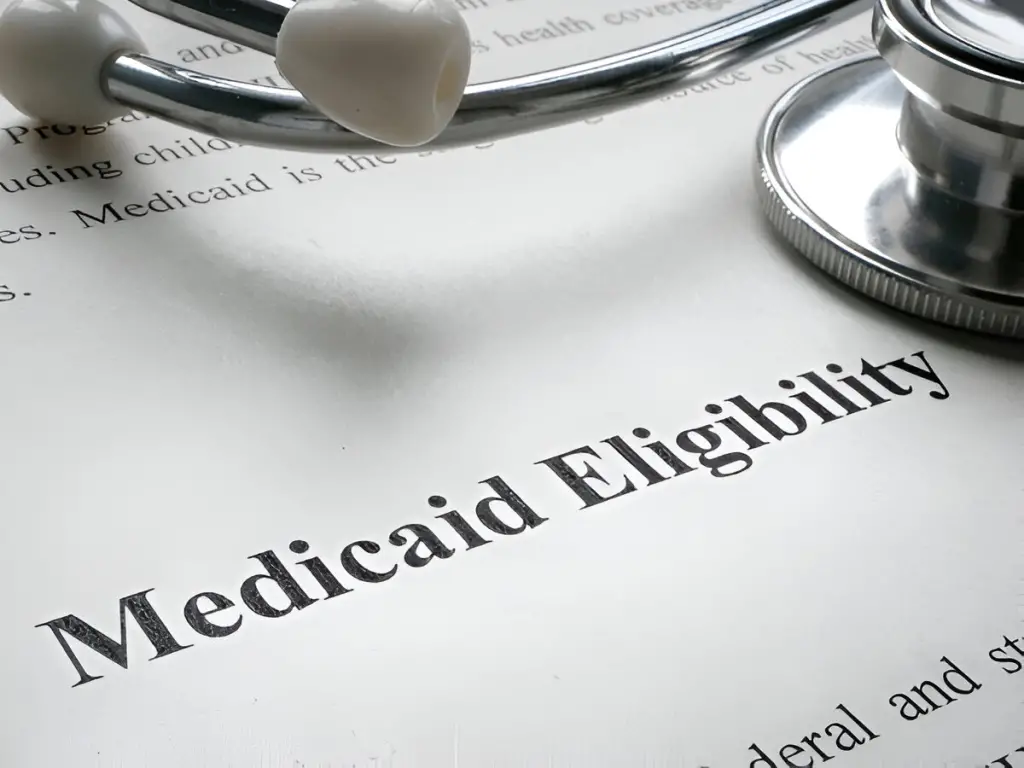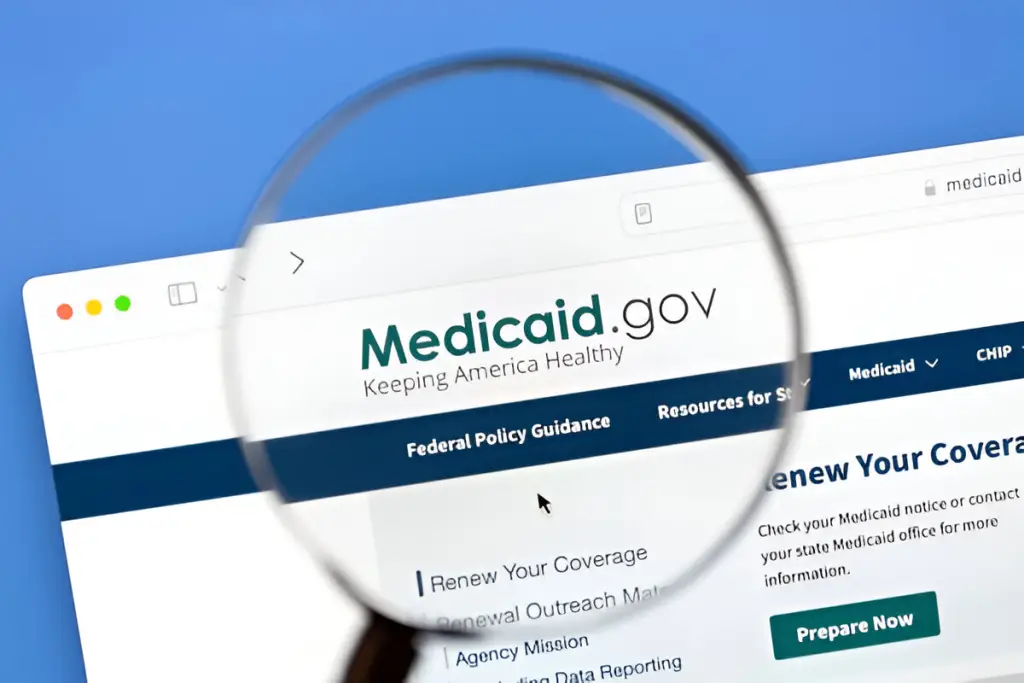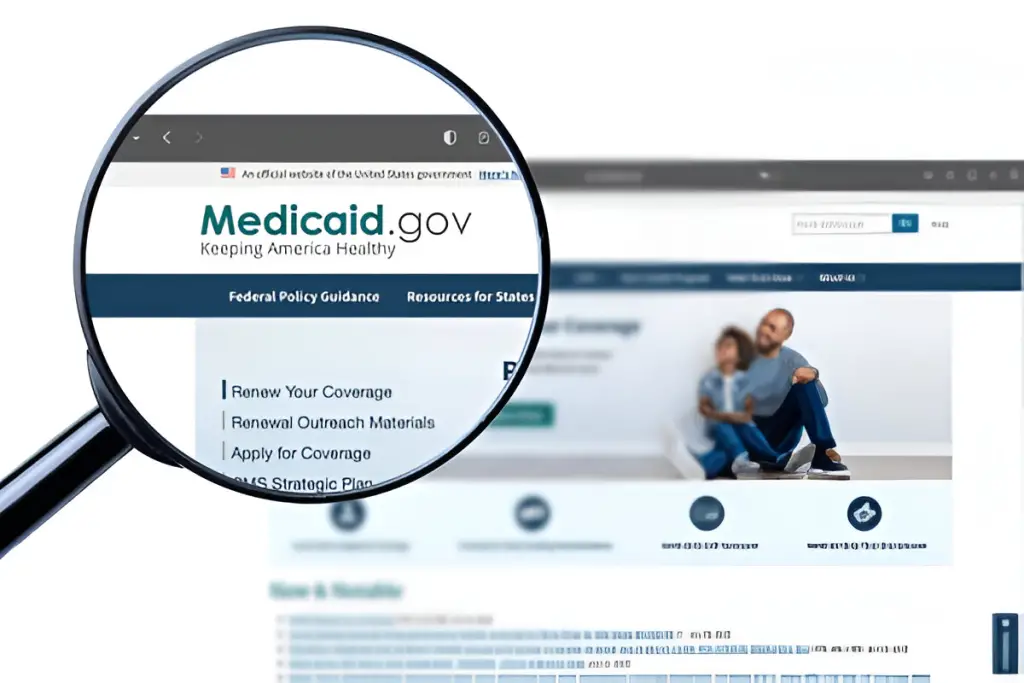Understanding how to apply for Medicaid in 2026 can be challenging. If you’re like a lot of people, you may be wondering where to begin, what to gather, and whether there are any deadlines.
The following article will break down each step of the procedure to make it easier to grasp. Medicaid is a health insurance program that provides coverage to low-income families, seniors, pregnant women, and individuals with disabilities.
Medicaid provides free or low-cost healthcare, and because restrictions differ by state, we will go over the policies in this blog, including who qualifies, what documentation you will need, and how to apply.
In this post, we will also discuss how Medicaid interacts with Medicare, Medicare Eligibility deadlines, and what to do after submitting your application. By the end of this article, you’ll know precisely how to apply for Medicaid in 2026.
Table of Contents
Understanding Medicare and Medicaid

Before learning how to apply for Medicaid, it’s essential to understand the distinction between Medicare and Medicaid. Many people confuse them, yet these two programs serve distinct populations and offer separate advantages. Having this information can help you avoid confusion in the future and apply to the appropriate program.
What is Medicare?
Medicare is a nationally financed health insurance program for those:
- Aged 65 and older.
- Younger individuals with specific disabilities
- Patients with End-Stage Renal Disease (ESRD)
Key features of Medicare:
- Covers hospital care, doctor visits, and prescription drugs
- Funded by the federal government
- Everyone in the U.S. has the same rules
What is Medicaid?
Medicaid is a joint federal and state program that supports:
- Low-income families
- Pregnant women
- Children and seniors
- People with disabilities
Key features of Medicaid:
- Provides free or low-cost healthcare
- Rules and coverage vary by state
- Often includes services Medicare does not cover, like long-term care
| Feature | Medicare | Medicaid |
| Who Qualifies | Seniors 65+, certain disabilities | Low-income families & individuals |
| Funding | Federal government only | Federal + State government |
| Coverage | Hospital, doctors, prescriptions | Wide range incl. long-term care |
| Cost | Premiums & co-pays usually apply | Free or low-cost, depending on the state |
Find Out If You are Eligible for Medicaid

Not everyone qualifies for Medicaid. Each state establishes its eligibility regulations; however, specific criteria apply to all jurisdictions. Knowing the qualifications makes it easier to determine whether you or someone you care about is eligible for coverage.
Income Requirements
Medicaid is mainly for people with low incomes. States evaluate eligibility based on your income, which is approximately equal to the Federal Poverty Level (FPL).
- Although specific categories (such as children and pregnant women) may be eligible for a larger income.
- States will set their income limitations, so check local guidelines.
Example of eligibility based on the Federal Poverty Level (FPL) (approximate).
| Household Size | Annual Income Limit (138% of FPL)* |
| 1 Person | $20,783 |
| 2 People | $28,207 |
| 3 People | $35,632 |
| 4 People | $43,056 |
*These numbers may change yearly and vary by state.
Citizenship and Residency
To be eligible, applicants must:
- Be U.S. citizens or qualified non-citizens (such as permanent residents)
- Live in the state where they are applying
Special Groups That Qualify
Even if income is slightly above the limit, you may qualify if you fall into one of these categories:
- Pregnant women
- Children under 19
- Seniors (65+)
- People with disabilities
- Individuals needing long-term care
In general, Medicaid eligibility depends on at least one or a combination of:
- Age
- Income level
- Number of people in your family
- If you’re pregnant or have a disability
What Documents Do You Need for Your Medicaid Application?

It is crucial to gather the necessary documentation before initiating the application process. Having everything ready saves time and reduces the likelihood that your application will be put off or denied.
Proof of Identity and Citizenship
You’ll need to prove your identification and citizenship or legal status. Commonly accepted documents include:
- Birth certificate
- U.S. passport
- Green card or immigration documents
- Driver’s license or state-issued ID
Proof of Income
Since Medicaid eligibility depends on income, you’ll need to submit recent financial records, such as:
- Pay stubs (usually last 2–4) or W-2s
- Tax returns
- Social Security award letters
- Unemployment benefit statements
Proof of Residency
Applicants are required to demonstrate that they live in the state within which they are applying. Items that may demonstrate residency include:
- Lease or mortgage statement
- Utility bills (e.g., electricity, gas, water)
- Official government mail (i.e., voter registration, DMV, etc.)
Other Supporting Documents
You may also need, depending on your situation.
- Health insurance information (if you have health insurance)
- Bank account statements (for senior or long-term care applicants)
- Medical records (for applicants seeking disability-based eligibility)
How to Apply for Medicaid: A Step-by-Step Guide

Applying for Medicaid can be intimidating, but taking steps can help break it down and make the process seem less daunting. If you’re applying for yourself or a family member, follow these steps to get started.
Step 1: Check Your Eligibility
Before you apply, you should first know if you are eligible. Medicaid eligibility is based on factors like:
- Income level compared to your state’s Medicaid limits
- Household size (number of dependents).
- Age and health requirements (specific subgroups qualified more easily than others, such as pregnant women, children, and elders).
Tips: Many states offer an online eligibility checker on their Medicaid websites.
Step 2: Gather Required Documents
Gather the Medicaid-required documentation before starting. You will need to provide proof of verification, income, residency, and health-related documentation. Gathering these necessary documents can help you avoid delays and streamline your process.
Step 3: Choose How to Apply
There are numerous methods to apply, depending on what is most convenient for you:
- Online: This is going to be the quickest and most direct option through your state’s Medicaid portal. Many people look for “how to apply for Medicaid online 2026,” and you’re probably already familiar and comfortable with the internet process.
- By Mail: Print and finish the application, then send it to your state Medicaid office.
- In Person: Visit your local Medicaid or social services office and ask a staff member for assistance.
- By Phone: Some states allow candidates to finish their applications over the phone.
Step 4: Submit Your Application
Now that you’ve filled out the form and engaged the required documentation, you can submit. If you have applied electronically, you will receive an immediate confirmation notice. If you are using the mail, it would be wise to send it with tracking.
Step 5: Track Application Status
After submission, keep track of your Medicaid application. Most states allow you to:
- Log in to your online Medicaid account
- Call the Medicaid office for updates
- Receive a letter or email about your status
Step 6: Watch for the Medicaid Application Deadline
It is critical to apply by the state Medicaid application deadlines. If a due date is missed, coverage might be delayed, and the request may not be granted until the next eligibility cycle. Always validate your state’s Medicaid coverage cut-off dates.
H3: Special Considerations
- New York: Applications go through NY State of Health or the Local Department of Social Services, depending on the category of eligibility. (MAGI vs Non-MAGI)
- Virginia: Check CommonHelp or the state marketplace.
- Disability Claims: These may take more documentation and time.
Open Enrollment of 2026 Vs. Year-Round Eligibility

When it comes to health insurance, it is essential to understand Open Enrollment and Year-round eligibility. There is a lot of confusion about the differences; many people believe they are the same, yet they are not. Knowing the difference might help you avoid missing deadlines and gaps in your healthcare coverage.
What Is Open Enrollment 2026?
Each year, Open Enrollment enables customers to select, renew, or change their health plans through the Health Marketplace. Open Enrollment for 2025 runs from November 1, 2024, to January 15, 2026 (dates may vary somewhat per state).
During this time, you can do:
- Establish a new health plan
- Switch to a new plan that better suits your needs.
- Subsidies and tax credits can help you save money.
If your need does not fall within this time frame, you may have to wait until the next Open Enrollment. Unless you are eligible for a Special Enrollment Period (SEP) due to life events such as marriage, the birth of a child, or loss of coverage.
How Medicaid Differs with Year-Round Eligibility
After filing your Medicaid application, one of the most common inquiries is what happens next. This step is critical because it prepares you to recognize changes and make decisions, as well as to have those decisions made for you quickly.
Year-round Medicaid means:
- You can apply whenever during the year you want,
- Your coverage begins as soon as your application has been approved.
- You don’t have to wait for the next Open Enrollment period.
| Feature | Open Enrollment 2026 (Marketplace Plans) | Medicaid (Year-Round) |
| Enrollment Dates | Nov 1, 2024 – Jan 15, 2026 | Anytime |
| Who Qualifies | Anyone (with or without subsidies) | Low-income individuals & families |
| Special Exceptions | SEP required for mid-year changes | Apply any time |
| Coverage Start | Typically, Jan 1, 2026 | Once approved |
What to Expect After You Apply for Medicaid
After submitting your Medicaid application, one of the biggest questions many face is what happens next. This step is crucial because it helps prepare you to identify changes and decisions, and prepare for those decisions to be made for you promptly.
Application Review and Processing
- The state Medicaid agency reviews your application.
- Verify your income and household information, and provide the required documents.
- The processing time will range between 30 and 45 days, depending on productivity.
Notification of Eligibility
- Once your application has been reviewed, you will receive a notice by mail or online.
- The notice will inform you whether your Medicaid application was approved or denied.
- If approved, it will show the coverage start date clearly.
Enrollment in a Medicaid Plan
- Some states let you pick a Medicaid managed care plan.
- You may get options with different doctors and healthcare networks.
- If you don’t choose, the state may assign one.
Access to Benefits and Services
- After enrolling, you can begin using your Medicaid benefits right away.
- Benefits will include doctor visits, hospitalization, prescription medications, and preventive treatments.
- Make sure to keep your Medicaid card safe for future appointments and services.
State Medicaid Websites

Each state operates its own Medicaid program, so regulations, benefits, and procedures may differ. The most straightforward approach to get accurate and up-to-date information is to visit your state’s Medicaid website.
Why Use State Medicaid Websites?
- State Websites have accurate, official information.
- You will discover information on eligibility, coverage, and how to apply.
- The majority of state websites include FAQs, forms, and directions for assistance.
What Information Can You Find?
You can commonly find on your state Medicaid website:
- Eligibility Requirements: Criteria based on income, age, or disability.
- Covered Services: Medical, dental, vision, and prescription benefits.
- Applications: Online applications, or printable applications if online is not available.
- Renewing: Including instructions on how to renew or update your case.
- Provider Search: To find Doctors or Hospitals that accept Medicaid.
Additional Resources
- Medicaid.gov: State-by-state contact list and general application instructions.
- HealthCare.gov: A comprehensive resource to determine if you’re eligible for and to apply for Medicaid or the Children’s Health Insurance Program (CHIP) in any state.
- Medicaid Planning Help: Private advisors may assist with complex applications, but make sure to check information with a state official website (which all end with .gov).
- State Websites: Always check the official state website for the most current information. Each state may change its processes or requirements at any time.
Limitations and Notes
- No Single Document: There is no single document providing details about the application procedures for all 50 states; this page is based on information from trusted sources such as Medicaid.gov.
- Variability: Eligibility and processes vary by state; states may adjust their eligibility (for example, North Carolina expanded Medicaid eligibility in 2023).
- Some older resources (i.e., 2020 X social media post about Medicaid resources) may be outdated. Check the correct state websites.
If you require assistance unique to your circumstance, please contact your state Medicaid office or your local County Assistance Office. At Medicare Nationwide, we want you to feel secure about your health plan selections.
When Should You Apply for Medicaid?

Timing is critical when you’re learning how to apply for Medicaid. Most states, unlike health insurance you purchase through the marketplace, have year-round enrollment for Medicaid. But if you use it during the “Medicaid application deadline,” there may be a deadline if you are trying to apply for a specific program (like Medicaid expansion or long-term care).
You should apply as soon as you are qualified due to income, disability, pregnancy, or age. Applying as soon as you are eligible ensures that you do not experience any delays in obtaining coverage at the start of the enrollment period. If you are unsure whether you qualify, you may verify it right away on your state’s Medicaid website or the federal online form.
What Services Are Covered Under Medicaid?
After you submit your application, many people start to ask themselves what benefits Mediciad covers. The coverage may vary slightly between states, but most Medicaid programs provide comprehensive care by covering a wide range of healthcare services.
Here are some standard services that are covered:
- Physician Visits: Both primary care and specialist visits.
- Hospitalization: Inpatient and outpatient services.
- Medications: It varies by state, but most Medicaid programs include prescription medications.
- Preventative Services: Screenings, immunizations, and wellness checkups.
- Pregnancy and Newborn Care: Comprehensive services for pregnancy-related care and delivery.
- Mental Health Services: Counseling, therapy, and substance use treatment services.
- Long-term Care Services: Nursing homes and home health services for eligible applicants.
Tip: The best way to find your state’s Medicaid benefits list is to check your state’s Medicaid handbook.
Frequently Asked Questions
Who qualifies for Medicaid?
Medicaid eligibility varies by state, but it is generally for low-income individuals, seniors, pregnant individuals, and people who are disabled.
How do I apply for Medicaid in my state?
To apply for Medicaid, you use through your state agency website (see above), through HealthCare.gov, by mail, over the phone, or in person at a local Medicaid office.
What documents do I need to apply for Medicaid?
Documents generally include: proof of identity, proof of income, proof of state residency, and, if applying based on a disability, medical records.
What is the easiest way to apply for Medicaid?
Open an account on the Health Insurance Marketplace and complete an application. If it appears that anyone in your household qualifies for Medicaid, your information will be sent to the state agency.
What will disqualify you from getting Medicaid?
Medicaid beneficiaries must generally be residents of the state in which they receive Medicaid. Medicaid beneficiaries must also be either citizens of the United States or certain qualified non-citizens, such as those with lawful permanent residency. Other eligibility groups may have limitations by age, or by pregnancy or parenting status.
Conclusion
Understanding how to apply for Medicaid in 2026 can be straightforward. Gather your Medicaid paperwork, apply online or in person, and keep track of any Medicaid application deadlines to ensure a smooth process.
Once approved, Medicaid provides you with access to essential services, including doctor visits, prescription medications, hospital care, and more. Whether you’re applying for yourself, a parent, or a child, Medicaid remains one of the most essential healthcare safety nets in the U.S.
Take advantage of the resources we’ve shared, including the 50-state Medicaid website directory, and start your application with confidence today.
Medicaid Application Checklist
Before Applying:
- Check your state’s eligibility rules and income limits.
- Decide if you need to choose between a Dual Eligible Special Needs Plan (D-SNP) and standard Medicaid (if you have Medicare).
Gather Documents:
- Proof of identity (Social Security Number (SSN), birth certificate)
- Proof of income (pay stubs, tax returns)
- Proof of address (driver’s license, utility bill)
Take Action:
- Apply using the fastest method (usually online via your state’s website).
- Respond quickly if they ask for more information.
After Applying:
- If approved, wait for your Medicaid card.
- If denied, be ready to appeal the decision.
